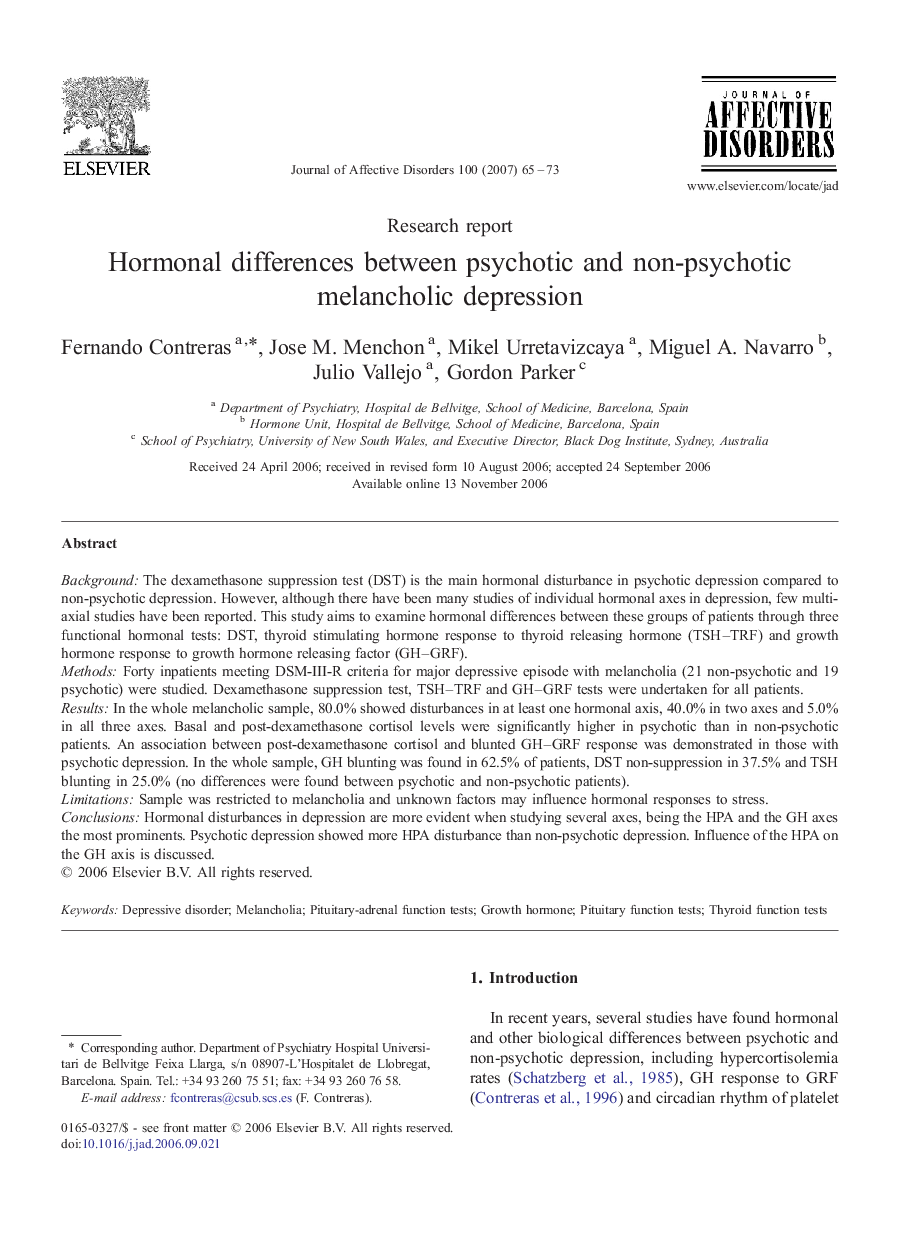| Article ID | Journal | Published Year | Pages | File Type |
|---|---|---|---|---|
| 6236930 | Journal of Affective Disorders | 2007 | 9 Pages |
BackgroundThe dexamethasone suppression test (DST) is the main hormonal disturbance in psychotic depression compared to non-psychotic depression. However, although there have been many studies of individual hormonal axes in depression, few multi-axial studies have been reported. This study aims to examine hormonal differences between these groups of patients through three functional hormonal tests: DST, thyroid stimulating hormone response to thyroid releasing hormone (TSH-TRF) and growth hormone response to growth hormone releasing factor (GH-GRF).MethodsForty inpatients meeting DSM-III-R criteria for major depressive episode with melancholia (21 non-psychotic and 19 psychotic) were studied. Dexamethasone suppression test, TSH-TRF and GH-GRF tests were undertaken for all patients.ResultsIn the whole melancholic sample, 80.0% showed disturbances in at least one hormonal axis, 40.0% in two axes and 5.0% in all three axes. Basal and post-dexamethasone cortisol levels were significantly higher in psychotic than in non-psychotic patients. An association between post-dexamethasone cortisol and blunted GH-GRF response was demonstrated in those with psychotic depression. In the whole sample, GH blunting was found in 62.5% of patients, DST non-suppression in 37.5% and TSH blunting in 25.0% (no differences were found between psychotic and non-psychotic patients).LimitationsSample was restricted to melancholia and unknown factors may influence hormonal responses to stress.ConclusionsHormonal disturbances in depression are more evident when studying several axes, being the HPA and the GH axes the most prominents. Psychotic depression showed more HPA disturbance than non-psychotic depression. Influence of the HPA on the GH axis is discussed.
